
As I believe revelation and understand the Scriptures of the Lord Jesus Christ, He has love and purpose behind everything He does. That of course includes instructing the Church and directing each of us in the entire world. He would not give a commandment nor a revelation without a purpose or meaning. The purpose of this article is to help members to understand the significance of the Revelation in D&C 125, as the Lord wants the name “Zarahemla” upon this area in Iowa, as indeed the place where the Book of Mormon, calls the same location, the City of Zarahemla. I believe the Land of Zarahemla is an area that surrounds this City of Zarahemla as you see in the map below. I don’t believe there should be a “Revelation Controversy.”
The Lord does not want this area in Iowa called the “New Jerusalem”, as that is in Israel. The Lord seems to be calling this area in Iowa as, the very location of Zarahemla of the Book of Mormon. It seems so odd at the length that others may insist, who are generally on the Historical side of the Church, that want to insist the Lord did not mean what he said.
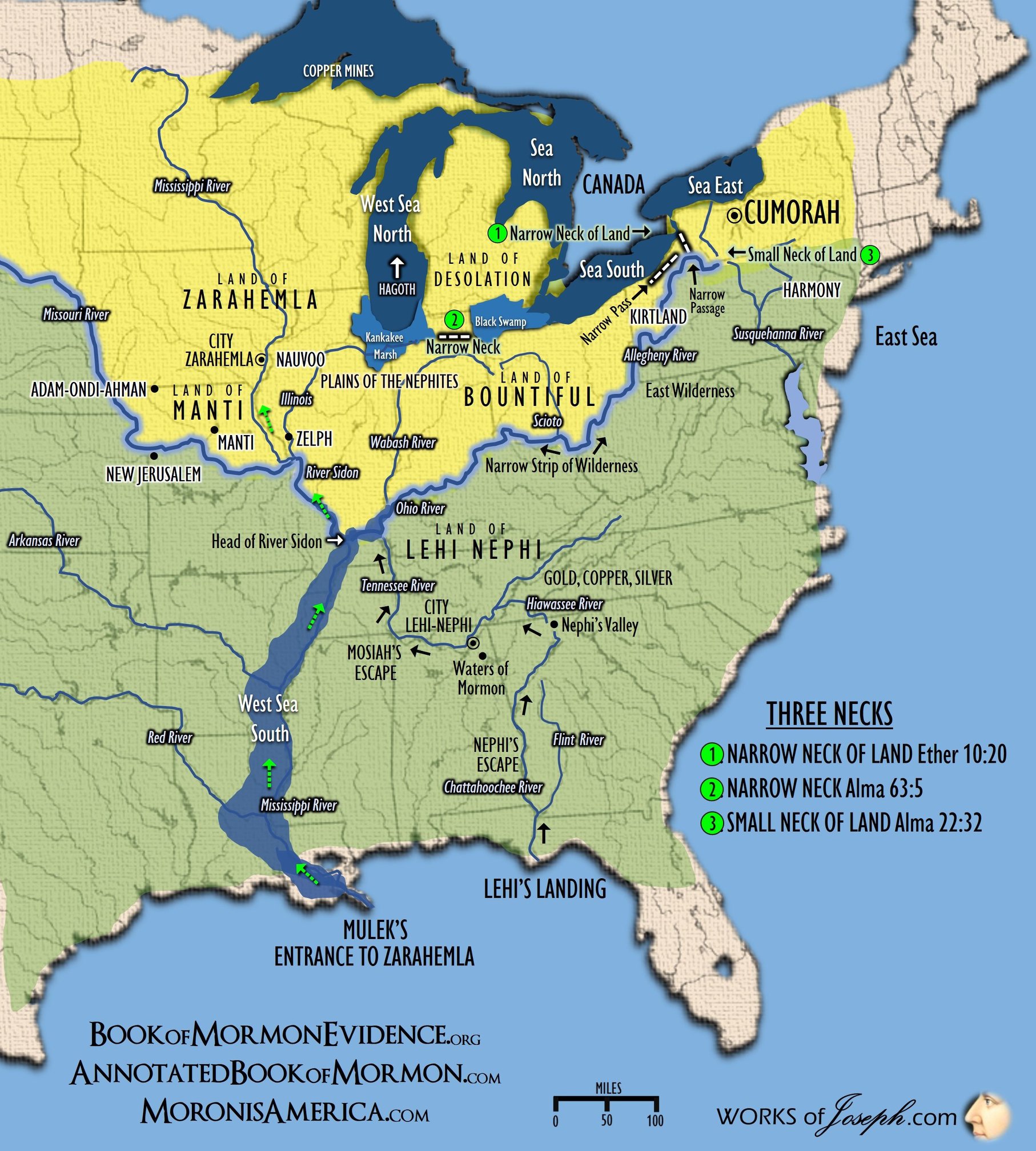
The Joseph Smith Papers defines a commandment as: “Generally, a divine mandate that church members were expected to obey; more specifically, a text dictated by JS in the first-person voice of Deity that served to communicate knowledge and instruction to JS and his followers.” https://www.josephsmithpapers.org/paper-summary/revelation-1-august-1831-dc-58/1
“Let them build up a city unto my name upon the land opposite the city of Nauvoo, and let the name of be named upon it.” D&C 125:
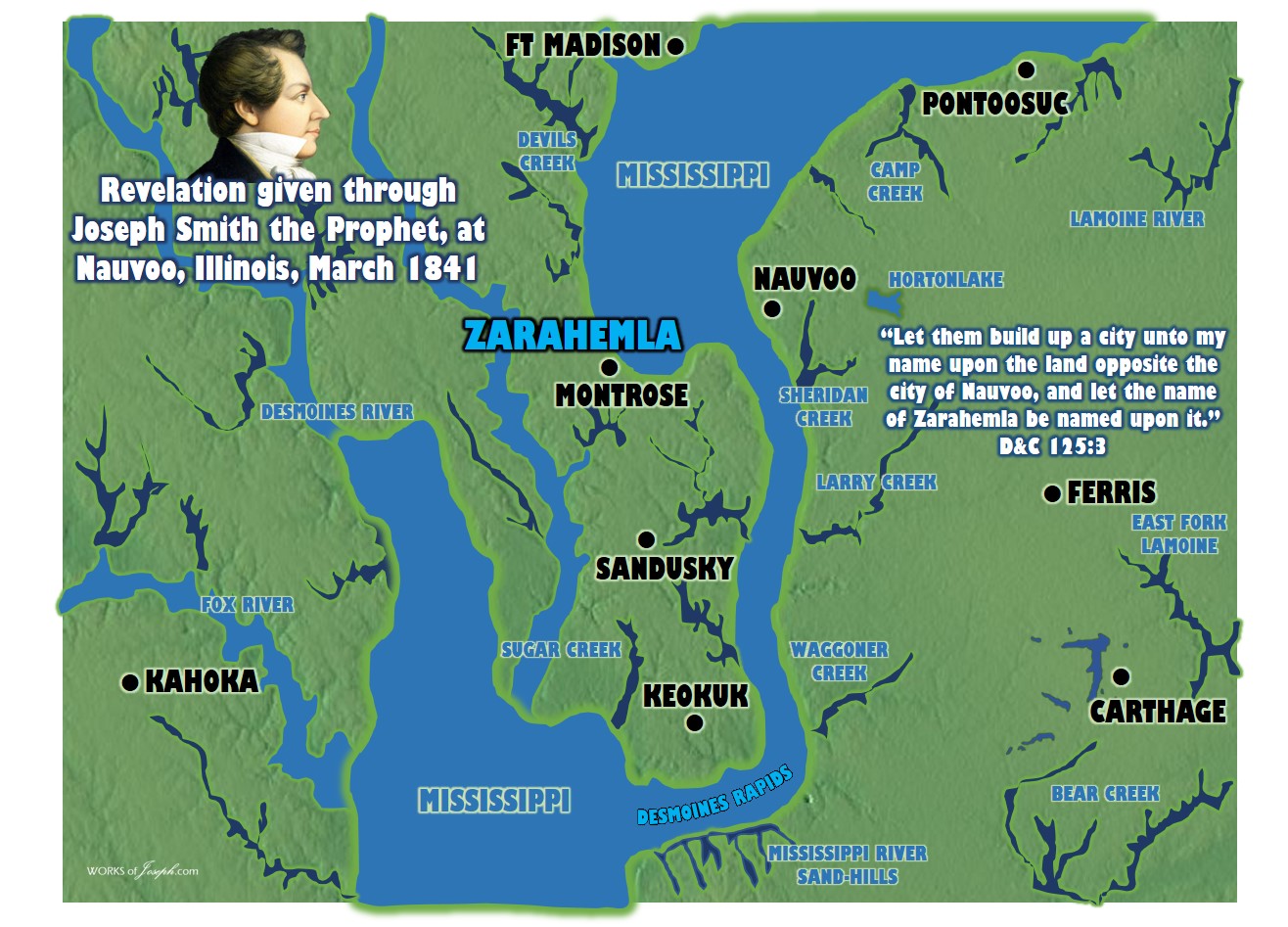
“A Revelation given in the City of Nauvoo in answer to the following interrogatory. What is the will of the Lord concerning the Saints in the Territory of Iowa?” JSP Here
According to JS’s journal, on 2 July 1839, JS and other church leaders visited land recently purchased in Iowa and “advised that a town be built there.” Willard Richards’s draft notes for JS’s manuscript history indicate that the town was to “be called Zarahemla.” (JS, Journal, 2 July 1839; Historian’s Office, JS History, Draft Notes, 2 July 1839.)
The Church’s mission is to prepare for the final establishment of the kingdom of God, which in turn would be Christ’s purpose.
“The mission of the Church is to prepare the way for the final establishment of the Kingdom of God on earth. Its purpose is, first, to develop in men’s lives Christ-like attributes; and, second, to transform society so that the world may be a better and more peaceful place in which to live.
President David O McKay said, “What was the [emphasis] of Christ’s teaching when he came among men? The first great proclamation was the announcement that the kingdom of God is at hand. “Repent for the kingdom of God is at hand.” [See Mark 1:15.] The fore-runner, John the Baptist, preached that. He preached the coming of the Lord. He showed the position which the Lord would hold in that kingdom and the Savior bore witness to it and preached the same. And what was the kingdom? Not a mythical, but a real kingdom; not only a feeling within, but also an outward expression of righteousness. It was divine government among men. That was what the Savior had in mind, the establishing of a divine government among men…
There are those in the world who say that jealousy, enmity, [and] selfishness in men’s hearts will always preclude the establishing of the ideal society known as the Kingdom of God. No matter what doubters and scoffers say, the mission of the Church of Christ is to eliminate sin and wickedness from the hearts of men, and so to transform society that peace and good-will will prevail on this earth.” Teachings of Presidents of the Church: David O. McKay
A Revelation Not Forgotten; the Naming of Zarahemla
If one searches for the word Zarahemla in the Triple Combination Index, they will discover over 60 references. All of which are located in The Book of Mormon, save one.
 In March 1841, the Lord gave a revelation, known as Section 125 of the Doctrine and Covenants, to the Prophet Joseph Smith which was very specific as to the name and location for a city. While the Lord previously named Adam-ondi-Ahman and the New Jerusalem as being in the state of Missouri, this revelation names a third city in America…in Iowa. The revelation goes as follows: “Let them build up a city unto my name upon the land opposite the city of Nauvoo, and let the name of Zarahemla be named upon it.” It is important to note, the Lord did not call the city “New Zarahemla”, just Zarahemla.
In March 1841, the Lord gave a revelation, known as Section 125 of the Doctrine and Covenants, to the Prophet Joseph Smith which was very specific as to the name and location for a city. While the Lord previously named Adam-ondi-Ahman and the New Jerusalem as being in the state of Missouri, this revelation names a third city in America…in Iowa. The revelation goes as follows: “Let them build up a city unto my name upon the land opposite the city of Nauvoo, and let the name of Zarahemla be named upon it.” It is important to note, the Lord did not call the city “New Zarahemla”, just Zarahemla.
We wonder about the significance of this revelation which was given over 170 years ago. Let us seek to understand the naming of this land and this city more deeply.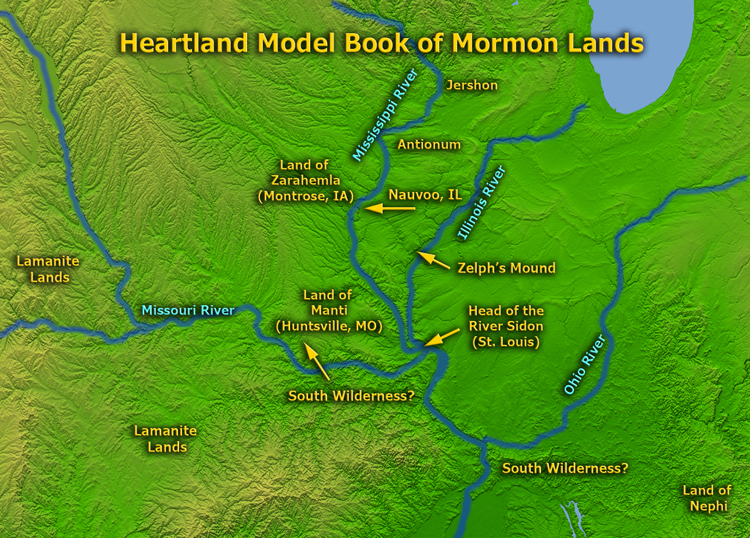
Zarahemla is used in the scriptures in four ways. 1) a land; 2) a city; 3) a people; and 4) the name of a king leader. The majority of the uses of the word Zarahemla referenced herein refer to “the land of Zarahemla” and “the city of Zarahemla.” It was the name of the Mulekite, and later the Nephite Capitol city for many hundreds of years before and after the coming of Christ to the Promised Land. The use of Zarahemla occurs only once in the Doctrine and Covenants.
Very early in Church History documents, the name Zarahemla was disassociated with the revelation. Writers of the histories of this period began to attribute the naming of Zarahemla to other persons who were contemporary with the Prophet Joseph or even to the Prophet himself rather than to the Lord. Perhaps it is time to shed new understanding on the fact that the Lord named the place of Zarahemla in 1841 by revelation.

During the Nauvoo period of Church history between 1839 and 1844, Joseph Smith had many dealings with Native American tribes of the area. He was also well acquainted with the Indigenous people of the Eastern United States. He had written in the early 1830’s that: “the Book of Mormon is a record of the forefathers of our western tribes of Indians.”[1] Even in the 1830’s he had authorized special missions to the Native people of the area (Sections 30 and 32 of the Doctrine and Covenants).
Joseph escaped the Liberty Jail in Missouri on April 16, 1839 and crossed the Mississippi River into Illinois by April 22, 1839. Within days the Prophet again crossed the river back into Iowa for the purpose “of making locations for the Church.”[2] We can draw upon three different historic accounts from the 1839-1841 era. Approximately eight weeks after his escape from jail, we read from the Joseph Smith Papers an entry as follows,
Called “Zarahemla” 2 July 1839-Tuesday
“Tuesday, Spent this day on the Iowa side of the [Mississippi] river. Forenoon went in company with Elders Rigdon and Smith, Bishops Whitney and Knights and other to visit a purchase lately made by bro Knights as a location for a town,
Advised that a town be built there,”
Note however, the following entry from Joseph Smith, History of the Church of Jesus Christ of Latter-day Saints, V. 3:382.[3] “Spent the forenoon of this day on the Iowa side of the river. Went in company with Elders Rigdon, Smith, and Bishops Whitney and Knight, and others, to visit a purchase lately made by Bishop Knight as a location for a town, and advised that a town be built there, and called Zarahemla.”
Thus we learn that the phrase “and called Zarahemla” was added to the narrative post 1841.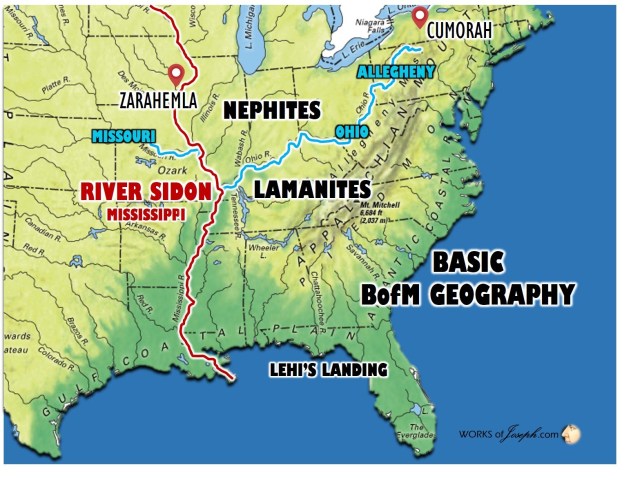 In the Manuscript History account of another early Church leader, Brigham Young, we find a reference as follows: “July 2 (1839). Brothers Joseph, Hyrum, and others came over the river to Montrose, and went out on the prairie and looked out the sight for a city for the Saints, which was called Zarahemla.”
In the Manuscript History account of another early Church leader, Brigham Young, we find a reference as follows: “July 2 (1839). Brothers Joseph, Hyrum, and others came over the river to Montrose, and went out on the prairie and looked out the sight for a city for the Saints, which was called Zarahemla.”
Significantly, however, the actual Brigham Young Journal in the possession of the Church History Library, and in the handwriting of Brigham Young, including brief notes in 1839 for only September and October, does not have a reference to Zarahemla. He does mention visits to Montrose and Quincy during this period.
This is a second instance where the phrase “which was called Zarahemla” was added to the narrative post 1841. We can view this journal and read the words penned by Brother Brigham Young in the archives of the Church History Department.
In addition, ready access to entries from two different Elias Smith Journals of 1839-1841[4] are located in the Church History Library. The first is a small 4×5 inch sheet of paper folded in half and forming a small booklet. He makes brief references in 1839 to October 12 and 19. He then makes entries for 1840. These include “April 6 conference in Nauvoo”, “July 12 conference at Ambrosia. chosen Bishop of the branch of the Church in Iowa”, and “July 18 ordained to that office.” Brief August entries are the 9th, 16th, 23rd, and 30th. He then makes reference to “Sept 6th meeting in Nashville”, “13th fyo” (word not decipherable), “14 Joseph Smith Senior died and buried 15th”, and “16th, Des Moines steamer came up from Quincy”.
The entries of this small record then skip forward to 1841 with three brief citations. “7 August Conference at Zarahemla. Don Carlos Smith died.” “8th Buried.” “16 Conference at Nauvoo.” There are no further references for 1841 and the record ends.
The reference to the” 7 August Conference at Zarahemla” entry seems to be misplaced. The actual journal citing events of 1839 and 1840, appeared to have been written in 1840. As we verify the death date of Don Carlos Smith (cited above), however we then realize that this event occurred in August 1841. The entries on the same page as the 1840 events were actually added to that page as events occurring in August 1841. This is an extremely important finding in this small Elias Smith journal. In addition to the small Elias Smith Journal, there is another and larger-sized journal that can be studied in the Church archives.
This other Elias Smith journal only consists of two 8×12 inch pieces of paper for the year 1841. In this version of his journal he makes a full page of entries for January. He then records entries for February at the bottom of the first page. On the second page he makes reference to more than a dozen days in February. At the end of the references in February 1841, and at the bottom of the same page, he made entries for March 1841, giving notations for 8 days. Among these 8 daily references are: “3rd Zarahemla surveyed about this time. Rained for the first time this spring or for two or three months.” “16th First locations made in Zarahemla by the citizens of Ambrosia.” These entries certify the revelation did indeed occur in 1841. It is interesting that Brother Smith says “about this time” because this allows for several days in early March in which the revelation could have occurred.
There are no further entries ascribed to this journal. The fact that this journal of 2 full pages illustrates a small block of time (January-March 16, 1841), helps to understand the skipping of approximately a year in the earlier and smaller account (cited above) of 1840-1841.
In a review of the website of Joseph Smith Papers History, Volume C-1, 1838-1856, beginning with 5 October 1839 and dealing with the Church and a stake in Iowa territory, not once is the location referred to as Zarahemla until March 1841.
On page 345 of the website version, we read the following: “20 March 1841, about this time, I received a revelation given in the city of Nauvoo, in answer to the following interrogatory….” Joseph then gives the entire content of Section 125. Every reference thereafter with respect to the location cited above in Iowa is referred to as Zarahemla, including the change of the name of the stake to Zarahemla at a conference of the Church by August 1841. The last reference to Zarahemla in these writings is to the stake being discontinued on 6 January 1842. This finding corresponds to the other three findings mentioned earlier herein.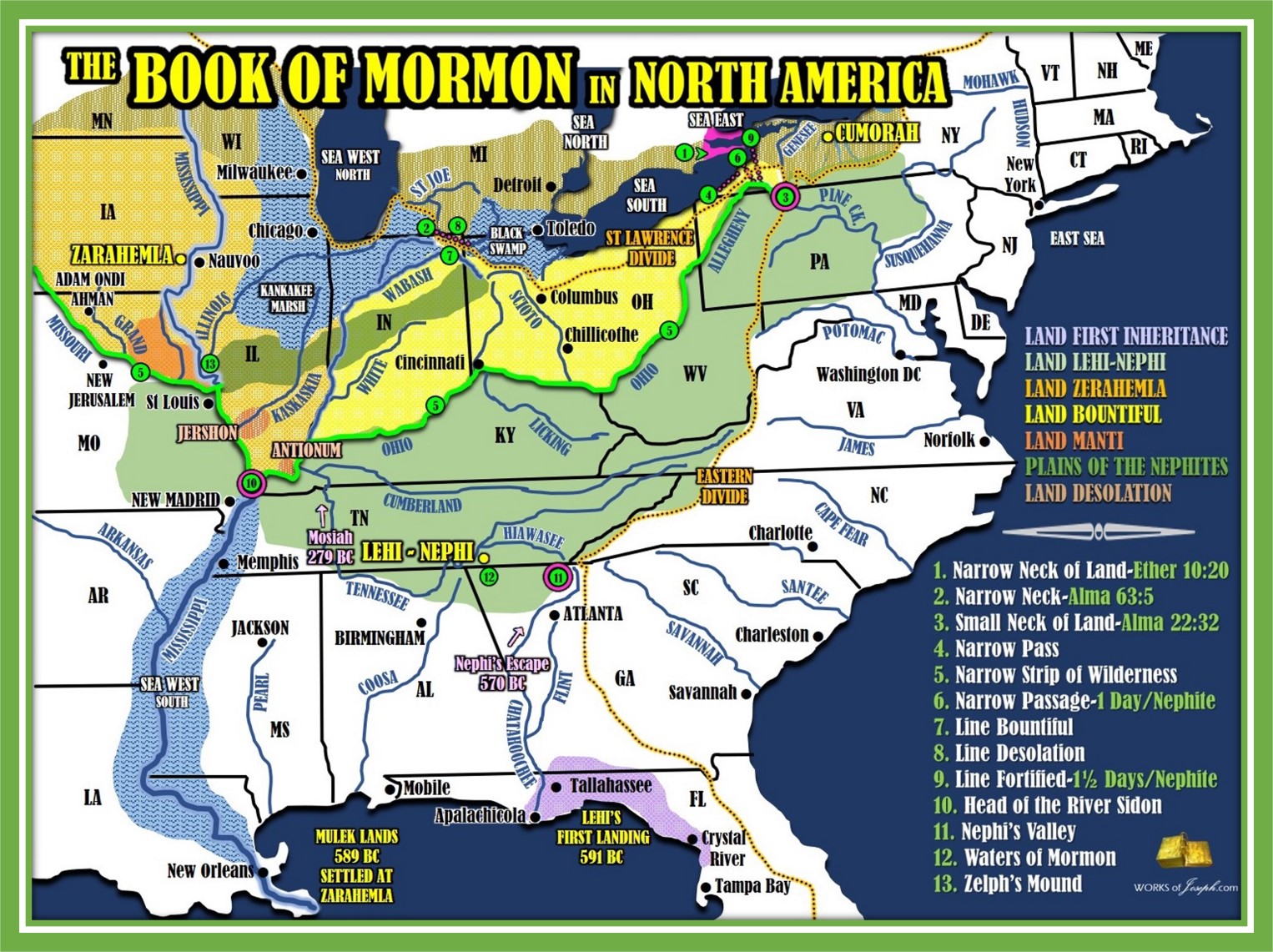
Finally, we are able to read the John Smith Journals/Papers and the Hardcopy/Manuscript/ Typescript of that material. He was the stake president of the original Iowa Stake in 1839. Please note the following important information:
- The typescript of the John Smith Journal is a record dating from January 1833 to 6 March
- Brother Smith began living in Iowa in the summer of 1839. He was called to preside over a branch of the Church which was later named the Iowa Stake in October 1839. At no time in this journal is the area or town or Church unit referred to as Zarahemla.
- In the small 4 x 7 handwritten journal of John Smith, which includes entries from 1839 and concludes with 6 March 1840, there is no reference to Zarahemla.
- In the badly damaged (a hole in the last several pages) handwritten journal of John Smith from 24 October 1838 to early March 1841, we find the following names: Nauvoo, Warsaw, Commerce, Iowa Territory, Nashville, Montrose, Ambrosia, Hawley settlement, Sugar Creek, Micham Branch, and a county seat. Zarahemla is not mentioned.
- Zarahemla is mentioned on 6 March 1841 as follows: “Had an interview with Brother Ripley came over to inform me that Joseph said it was the will of the Lord the brethren in generally in Ambrosia should move in and about the city of Zarahemla with all convenient speed which the Saints are willing to do because it is the will of the Lord. The Lord help thy people to gather out of Babylon.”
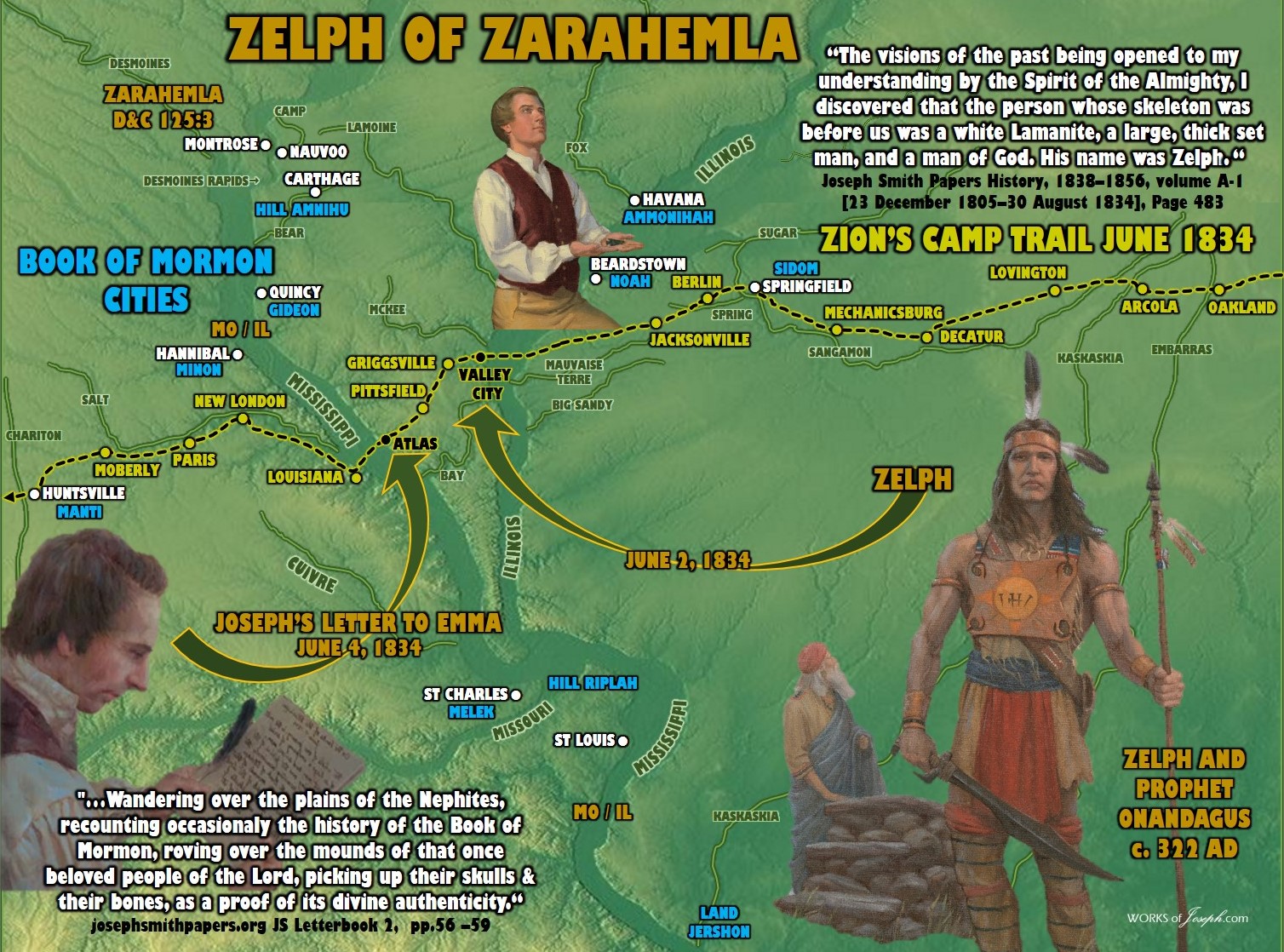
Zelph of Zarahemla
It is clear from Church History sources the use of the name Zarahemla is accurately associated with the March 1841 revelation in Section 125 of the Doctrine and Covenants from the Lord. This is an important piece of information provided by these early journal historians. Therefore, we have learned that previous references to Zarahemla (as cited above), which were pre-March 1841, were inserted by scribes and writers who were not the actual writers- Joseph Smith, Brigham Young, and Elias Smith- after the true date of the revelation.
The heading of Section 125 of the Doctrine and Covenants reads: “Revelation given through Joseph Smith the Prophet, at Nauvoo, Illinois, March 1841, concerning the saints in the Territory of Iowa. HC 4: 311-312.” Verse 3 states: “Let them build up a city unto my name upon the land opposite the city of Nauvoo, and let the name of Zarahemla be named upon it.”
The first Stake in Iowa was named the Iowa Stake and organized on 5 October 1839. After the above referenced revelation, the Stake was renamed the Zarahemla Stake in August 1841 and then discontinued on 6 January 1842.[5] (Joseph Smith Papers, Journals, Volume 2, page 426, Zarahemla, Montrose Township, Lee County, Iowa Territory (now state). Since the dissolution of the Zarahemla Stake, the Revelation, and the importance of the city across from Nauvoo seems to fade from history. But should it have? Is there any relevance or reason to take another look at Zarahemla? Could it possibly be a hint at where the promised land truly is, and the covenants associated with the land?
 The Lord only named three cities in the revelations of the Doctrine and Covenants. The New Jerusalem, Adam-ondi-Ahman, and Zarahemla. He revealed the ancient location of Adam-ondi-Ahman and the future location of the New Jerusalem in Missouri. In choosing to name Zarahemla, a city across the river from Nauvoo, is the Lord suggesting the location of the Book of Mormon city? If not, why wouldn’t he have called it New Zarahemla in order to distinguish it from the ancient city, similar to Jerusalem, and New Jerusalem? The Lord has given us the revelation for His purposes. We must honor this revelation as we do any and all other revelations He has given in these last days and seek to know His will. We believe the day will come when truth will spring forth from the earth, and we will learn the purposes of the Lord regarding Zarahemla.
The Lord only named three cities in the revelations of the Doctrine and Covenants. The New Jerusalem, Adam-ondi-Ahman, and Zarahemla. He revealed the ancient location of Adam-ondi-Ahman and the future location of the New Jerusalem in Missouri. In choosing to name Zarahemla, a city across the river from Nauvoo, is the Lord suggesting the location of the Book of Mormon city? If not, why wouldn’t he have called it New Zarahemla in order to distinguish it from the ancient city, similar to Jerusalem, and New Jerusalem? The Lord has given us the revelation for His purposes. We must honor this revelation as we do any and all other revelations He has given in these last days and seek to know His will. We believe the day will come when truth will spring forth from the earth, and we will learn the purposes of the Lord regarding Zarahemla.
[1] Teachings of the Prophet Joseph Smith, 2002, p. 13).
[2] Joseph Smith Papers, Journals, V. 1, p. 336.
[3] Smith, Joseph, History of the Church of Jesus Christ of Latter-day Saints, V. 3:382.
[4] Smith, Elias, Journals 1839-1841.
[5] Joseph Smith Papers, Journals, Volume 2, page 426.



